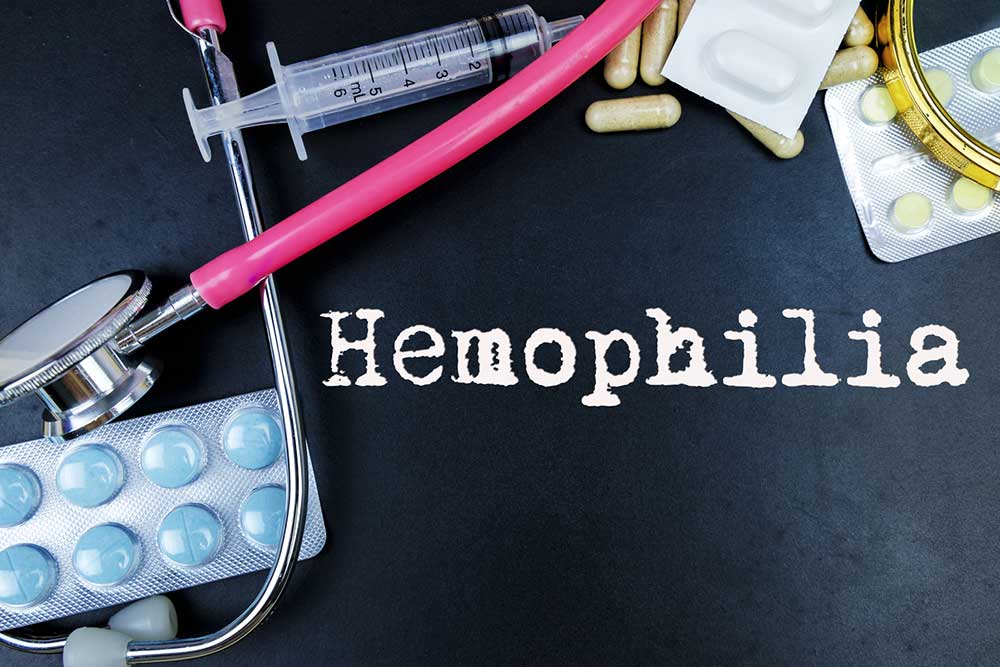7 Common Ways to Treat Hemophilia
Hemophilia is an inherited genetic disorder that is passed on from the mother. A mutation in the X-linked recessive chromosome causes this and since females possess two X-chromosomes and males possess one X and one Y-chromosome, a female with the mutation may not be affected. This is because the other X chromosome in the female will produce the clotting factors necessary for normal clotting. But, a male with deficient X chromosome has chances of developing the disorder since he does not have another X to make up for the mutation.
This illness impairs the body’s ability to clot blood effectively and results in those suffering from it to bruise easily and bleed longer.

Types of Hemophilia
There are three types of Hemophilia – Hemophilia A , B and C with A being the most common. Eight out of 10 people who suffer from hemophilia suffer from this type.
Hemophilia A is caused by a deficiency in factor VIII, Hemophilia B, is caused by a deficiency in factor IX and Hemophilia C, which is a mild form of the disease is caused by a deficiency in factor XI. In this, spontaneous bleeding does not occur, but heavy bleeding occurs after surgery or trauma.
The diagnosis for Hemophilia can be done through a blood test.
Treatment
There are many ways to treat Hemophilia depending on the severity of the illness.
1. Hemophilia A is treated with prescription hormone, desmopressin. This can be administered by being injected into a vein or as a nasal spray. Those suffering from this will need long-term treatment and at a specialized Hemophilia treatment center (HTC). The missing factor, factor VIII is replaced during the course of this treatment and this process is called replacement therapy. Blood donations can be one way of getting this factor, but now can be created in a lab. The frequency with which this treatment is administered depends on the severity of the disease. In the case of a mild form, only episodic or on-demand treatment will be required. In this the replacement therapy will need to be run only after a bleeding episode. But in the case of severe Hemophilia, prophylactic therapy may be required. This is when a person will need routine transfers of factor VIII to prevent any bleeding episodes and resulting complications.
2. Hemophilia B is treated by infusing donor clotting factors into the blood of someone suffering from it. These factors can also be given in the synthetic form and these are called “recombinant factor IX.” In milder forms of this disease, the patient may be given desmopressin acetate to salve small wounds with. This stops the bleeding, but larger wounds and internal bleeding will require immediate medical attention.
3. Hemophilia C can be treated by plasma infusion which helps in stopping hemorrhaging.
4. Since several “clotting factors” are linked to the different types of Hemophilia, treatment for a severe case can involve receiving the specific clotting factor that a patient lacks. This sort of replacement therapy can be used even when a bleeding episode is in progress. It can also be used as a prevention technique to prevent bleeding episodes.
5. Patients can also be administered anti-fibrinolytics which help blood clotting by preventing clots from breaking down.
6. Fibrin sealants are another effective way to treat this illness. This medication can be applied directly to wounds to aid in clotting.
7. Minor cuts in hemophiliacs can be treated by first aid. Applying pressure and bandages and even an icepack to the wound will take care of the bleeding.
Apart from bleeding profusely and very easily at that, the bleeding is not restricted to cuts alone. People with hemophilia can have painfully swollen joints which can bleed at times. This internal bleeding can happen without cause or injury and since the blood does not clot, it can have life-threatening consequences. This repetitive bleeding can also cause the joints to get damaged resulting in the need for physical therapy for rehabilitation of the joints.
Spontaneous bleeding can also occur in the brain and a person can suffer from neurological problems because of this. There is also the risk of developing infections like hepatitis, on receiving donor blood.

